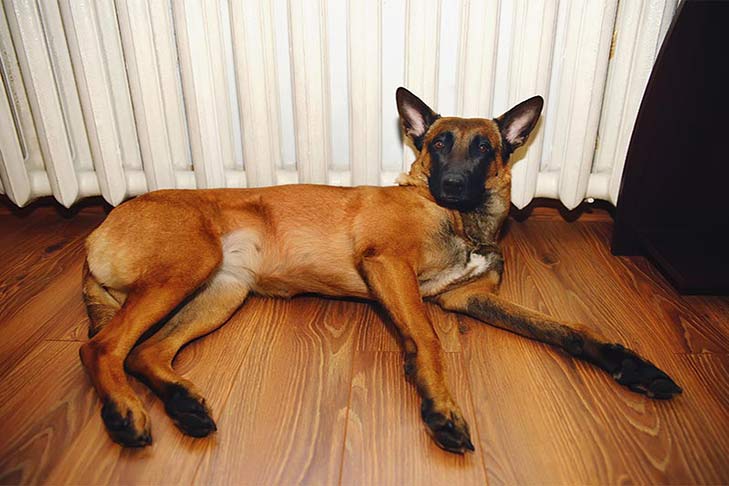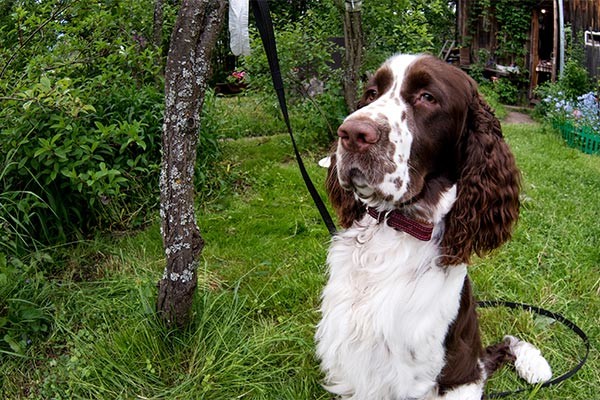
There are many advantages to sperm collection. The ability to ship semen across the country and internationally can help promote genetic diversity within a breed. Sperm can be kept frozen for years beyond the life of a dog and used when the right female breeding opportunity comes along.
Stacey Hathaway and Stephanie Parker are registered veterinary technicians and the owners of Infinity Canine, LLC in Sanford, N.C. They specialize in canine reproduction and focus largely on sperm collection and artificial insemination services. They shared the following information that breeders need to ensure a successful experience when collecting semen from their dogs.
The Impact of Age
One important aspect in choosing when to collect from your dog is age. While it may be tempting to want to wait and see how a dog develops into competition as he matures, younger is better when it comes to collecting, Hathaway said. While an older dog may have a proven performance record, sperm quality is greatly impacted by age and activity. Dogs between the ages of 1-to-2 years old will have the highest sperm counts and the healthiest motility and morphology. A younger dog’s sperm can be frozen for a “better safe than sorry” approach. As dogs age, sperm count naturally decreases. Testicular damage from sports such as agility and herding can also impact the quality of an older dog’s sperm. And finally, there is no way to predict that a dog will stay healthy and have a lengthy breeding career. Collecting from your potential stud dogs early can be an insurance policy for your bloodlines. “Consider it one of the health testing steps you take,” Hathaway says.
Consideration for Older Studs
If you are planning to collect from an older stud dog, Hathaway recommends taking that dog to your veterinarian for a health checkup well in advance. Because age is known to lower the sperm count and quality of the sample, the veterinarian may recommend certain dietary supplements. “The dog should be on the supplements for at least two months prior to collecting,” says Parker. In younger dogs, people may do a clean out ejaculation two months prior to collecting the sample that they want to use for the breeding. For older dogs, Hathaway recommends that you take what you can get and treat each sample as if you plan to use it for breeding.
Preparation Makes Perfect
Beyond teaching your dog to be well behaved, there is little training necessary to get a dog ready to be collected from. Hathaway recommends getting your dogs comfortable with the physical handling of his prepuce to reduce the chances of his being surprised. This can be done as part of your regular grooming and husbandry routine. Because collection is done using manual stimulation, there is not much need to get him used to other equipment.
It’s also important to allow potential stud dogs to practice mating behavior. “Dogs that may become studs should be allowed to hump and should not be corrected for it, or they can become conflicted about the behavior,” Hathaway says. Allowing a dog to practice masturbation on a favored object or toy is a good idea. Later the same toy can be used as a signal to the dog to be prepared for you to collect.
It’s also important to have a certain area of the kennel that is used only for collection. Dogs should never be corrected when in the collection area, Hathaway explains. The area should be quiet and free of distraction. It’s important that the dog’s association with the area be only with collection, and that he doesn’t have any negative feelings that could develop from punishment. You also want to be careful not to keep the collection area too clean, as scent is very important to a dog’s reproductive urge. If the dog has a favored object, you can bring that into the collection area as a tool to prepare him. According to Parker, it’s also a good idea to wear the same clothing each time. Smell is a strong tool to aid in getting the best sample possible from your dog.

Timing Is Everything
Another important aspect of collection is timing. According to Hathaway, spring is the best time to collect from your dogs as the weather is warming. It takes two months for the testicles to completely fill with semen, so she recommends trying to prevent dogs from masturbating during the two months before you plan on collecting. With younger dogs that will have naturally higher sperm counts, you can be more lenient with the time frame.
Using a Female in Heat
You don’t need to have a female in heat to help your dog be interested in collecting, but it helps. The odors and pheromones a female in heat secretes will naturally get a male dog interested in mating and increase the likelihood of a higher quality sample. Many reproductive facilities have relationships with clients who can provide a dog in season when you are ready to collect from your stud.
Equipment
If you are going to collect from your dogs at home, it’s important to have everything you need. While your veterinarian will be separating and checking the sample’s quality, you will want to ensure it gets to her safely. “Always get your equipment from a reputable resource,” Hathaway suggests. You will need collection sleeves, sterile plastic tubes, plastic syringes, and proper chilling and storage equipment. Extender additives will be added to the sample after your veterinarian has checked and separated it.
Brucellosis
One of the most important things to do before collecting from your dog is brucellosis testing. This simple test can save a lot of grief down the road. Brucellosis infection can lead to aborted litters and loss of fertility. “Brucellosis is not just a sexually transmitted disease,” Hathaway says. It can be spread through bodily secretions. If a male dog licks an infected female’s vulva, he can also become infected. So even if you are not planning to breed by live cover, all dogs should be tested before collecting. Facilities that offer reproductive services may offer the test on site at the time of service. Anyone planning to breed his or her dogs should be well versed on the transmission risks of brucellosis.
Post Collection
After you have your sample, it’s important to get it to the veterinarian as quickly as possible for processing. Hathaway recommends that clients who collect at home chill the sample and get it to the reproductive veterinary office within two-to-three hours. Once received, the semen must be spun down in a centrifuge to separate the sperm from other testicular fluids. A veterinarian or veterinary technician then looks at the sperm under a microscope to observe motility and morphology and get a count. Sperm is counted in millions-per-milliliter of fluid. Motility is the observation of how well the sperm is moving; good motility ensures quick insemination of the female’s eggs. Morphology is the observation of how the sperm look. Mutated sperm with double heads or improperly formed tails that do not travel as well can affect fertility.
Once the sperm has been checked for quality, it can be separated into portions to be shipped. Extenders can be added to increase the life span of the sperm. Each sample is portioned into sterile straws or frozen into pellets. The samples are then frozen into liquid nitrogen in special containers and can be stored for later use or shipped for breeding. Hathaway and Parker stress the importance of properly labeling samples throughout the process. Improper labeling can lead to confusion and the risk of incorrect breedings.
A Rewarding Process that Helps Prepare for Future Generations
Canine reproduction and breeding can be a complicated but rewarding road to navigate. Semen collection offers a way to preserve genetic lines and diversity within a breed. Collecting from studs while they are young can provide a guarantee of the healthiest sperm possible. Long-term storage options ensure that your dog’s genetics can be preserved as his show career develops. To make sure you have a good experience with collecting, get your dog comfortable with physical handling and set aside a space to use only for the process. Professional help is available from your reproductive veterinary team to get the best possible outcome for storing and shipping.

